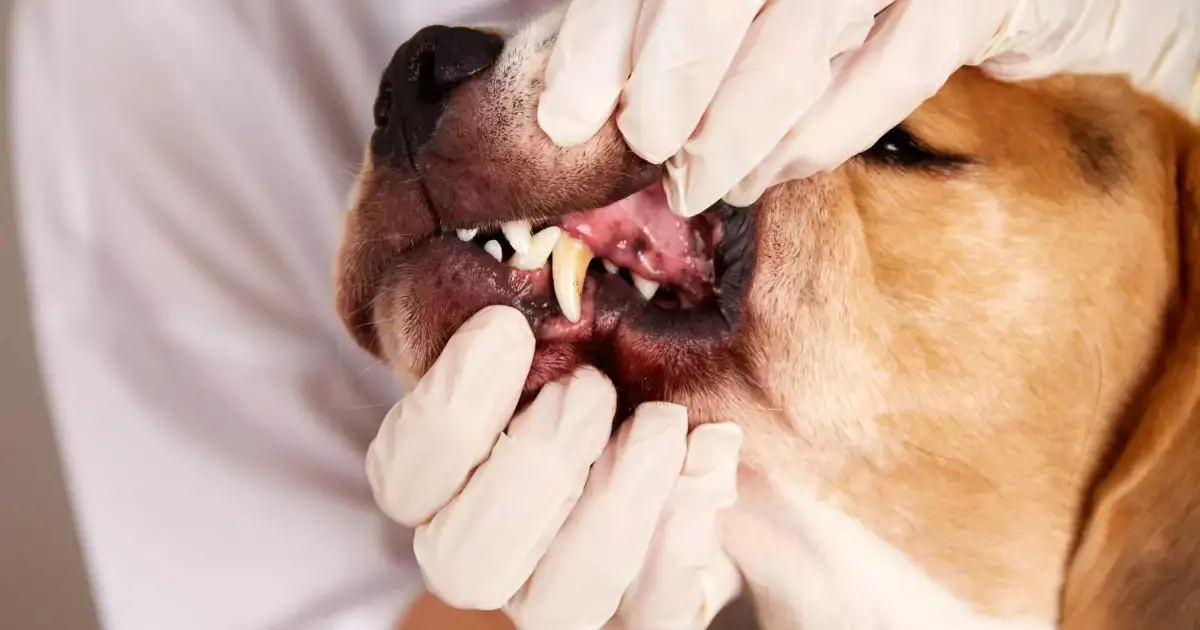Periodontal disease, commonly recognized as gum disease, is an escalating concern among dog owners and veterinarians alike. This inflammatory condition affects the surrounding structures of a dog’s teeth—the gums, periodontal ligament, and alveolar bone— and often begins with something as innocuous as plaque accumulation. If neglected, plaque can harden into tartar, setting the stage for more serious dental issues. Shockingly, statistics from the American Veterinary Dental Society indicate that more than 80% of dogs over the age of three are affected by periodontal disease. This article delves into the underlying causes, symptoms, and effective strategies for prevention and management of the condition.
Periodontal disease is not a singular occurrence; it progresses through various stages, each with its own characteristic signs and implications.
1. Stage 1: Gingivitis
This is the initial and most minor form of periodontal disease. At this juncture, the gums may appear red and swollen, often leading to bleeding, particularly upon brushing or chewing. Because gingivitis is entirely reversible with appropriate dental care, early detection at this stage is crucial.
2. Stage 2: Early Periodontitis
As the condition advances, attachment loss begins, and the gums recede creating spaces or pockets around the teeth. There can be mild bone loss, and bad breath often becomes noticeable. It’s a clear sign that the disease needs to be addressed effectively.
3. Stage 3: Moderate Periodontitis
Continuing to the moderate stage, pockets deepen, leading to more significant bone loss and damage to the supporting structures surrounding the teeth. At this stage, discomfort is often more noticeable and teeth may start to loosen.
4. Stage 4: Advanced Periodontitis
This is the most severe stage, where extensive bone loss and deep periodontal pockets are present. Dogs may experience considerable pain and difficulty eating, and loose teeth might even fall out. The urgency for treatment increases dramatically at this stage.
Identifying the early signs of periodontal disease can be challenging as symptoms tend to be subtle. This emphasizes the importance of vigilance in monitoring your dog’s oral health. Common early symptoms include:
– Red, swollen, or bleeding gums
– Bad breath, or halitosis
– Reluctance to eat or chew
– Excessive drooling
– Visible tartar accumulation on teeth
As the disease progresses, symptoms can become more severe, highlighting the need for immediate attention. These may include:
– Loose or missing teeth
– Abscesses or pus surrounding teeth
– Receding gums
– Behavioral changes indicating pain or discomfort
Plaque and tartar buildup are the primary culprits behind periodontal disease. Bacteria form a biofilm on the teeth that, if left unchecked, leads to mineralization into tartar. However, several factors can heighten the risk:
– Age: Older dogs are more susceptible due to the cumulative effect of plaque over the years.
– Breed: Smaller and toy breeds often have overcrowded teeth, increasing their risk.
– Diet: Soft and sticky foods can exacerbate plaque accumulation.
– Oral Hygiene: Insufficient dental care, including infrequent brushing or professional cleanings, can worsen the issue.
Effectively managing periodontal disease requires a dual approach: professional veterinary care and dedicated home maintenance.
– Professional Dental Cleanings: The first line of action typically involves a comprehensive cleaning, which removes plaque and tartar both above and below the gum line. This procedure is usually performed under anesthesia for the dog’s comfort and safety.
– Antibiotics: For cases entangled with infection, antibiotics may be prescribed to counteract bacterial infections and alleviate inflammation.
– Tooth Extractions: In severe situations, damaged teeth might need extraction to prevent further health complications.
– Surgical Procedures: Advanced stages could necessitate more invasive treatments, such as flap surgery or bone grafts, to restore lost tissue or correct severe damage.
While periodontal disease can have significant ramifications for a dog’s health, particularly when neglected, prevention is feasible and often less costly than treatment. Here are some essential practices:
– Regular Brushing: Daily brushing is an effective method to stave off plaque buildup. Use a toothbrush and toothpaste specially designed for dogs.
– Dental Chews and Toys: Utilize products that promote dental health. Look for the Veterinary Oral Health Council (VOHC) seal of approval for quality assurance.
– Balanced Diet: Provide nutritional provisions that include dental health benefits. Certain commercial dog foods are formulated specifically for this purpose.
– Routine Veterinarian Check-ups: Regular veterinary assessments can facilitate early detection and prompt treatment of oral health issues. Aim for at least one dental check-up each year.
Although periodontal disease in dogs may not appear life-threatening at a glance, the long-term effects it can have on overall health are profound. Chronic oral disease can lead to systemic health issues, including heart, liver, and kidney problems. By remaining proactive about dental hygiene and monitoring your dog’s oral health, you can significantly enhance their quality of life and well-being.

